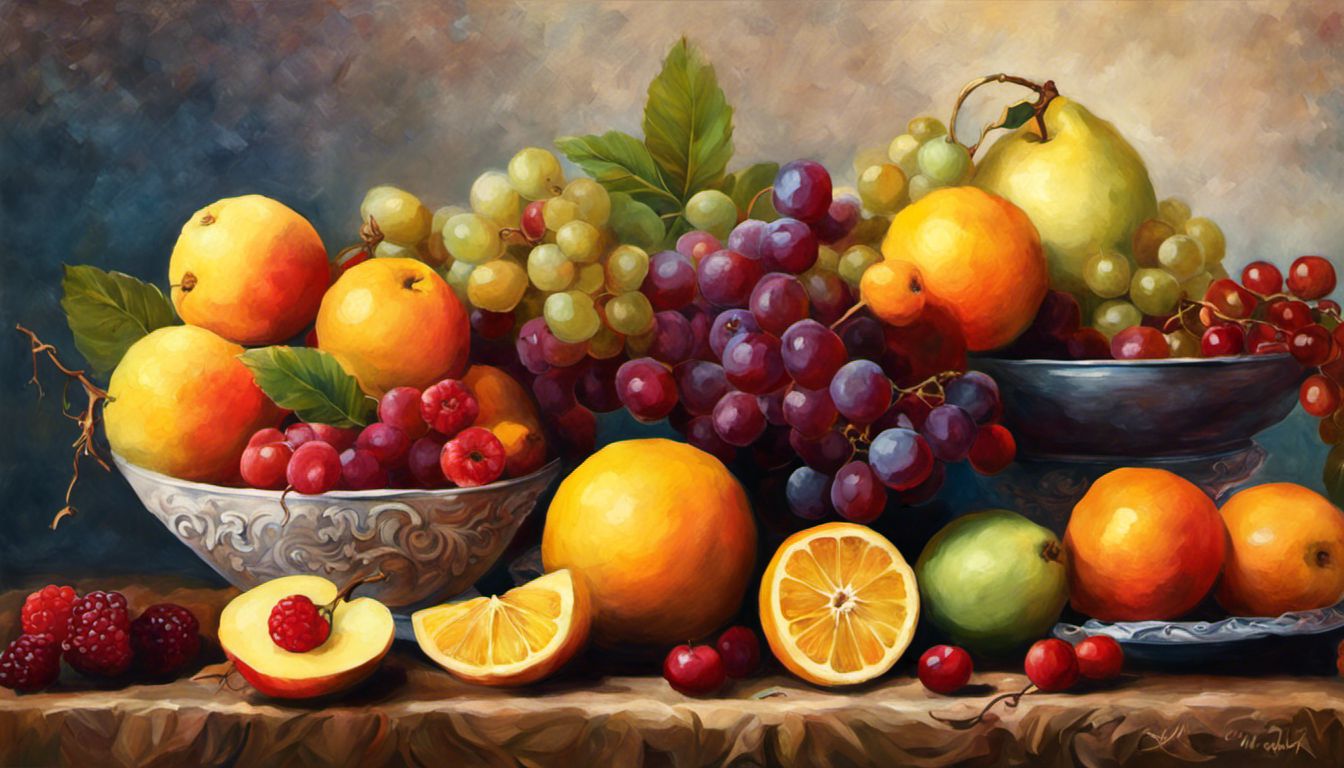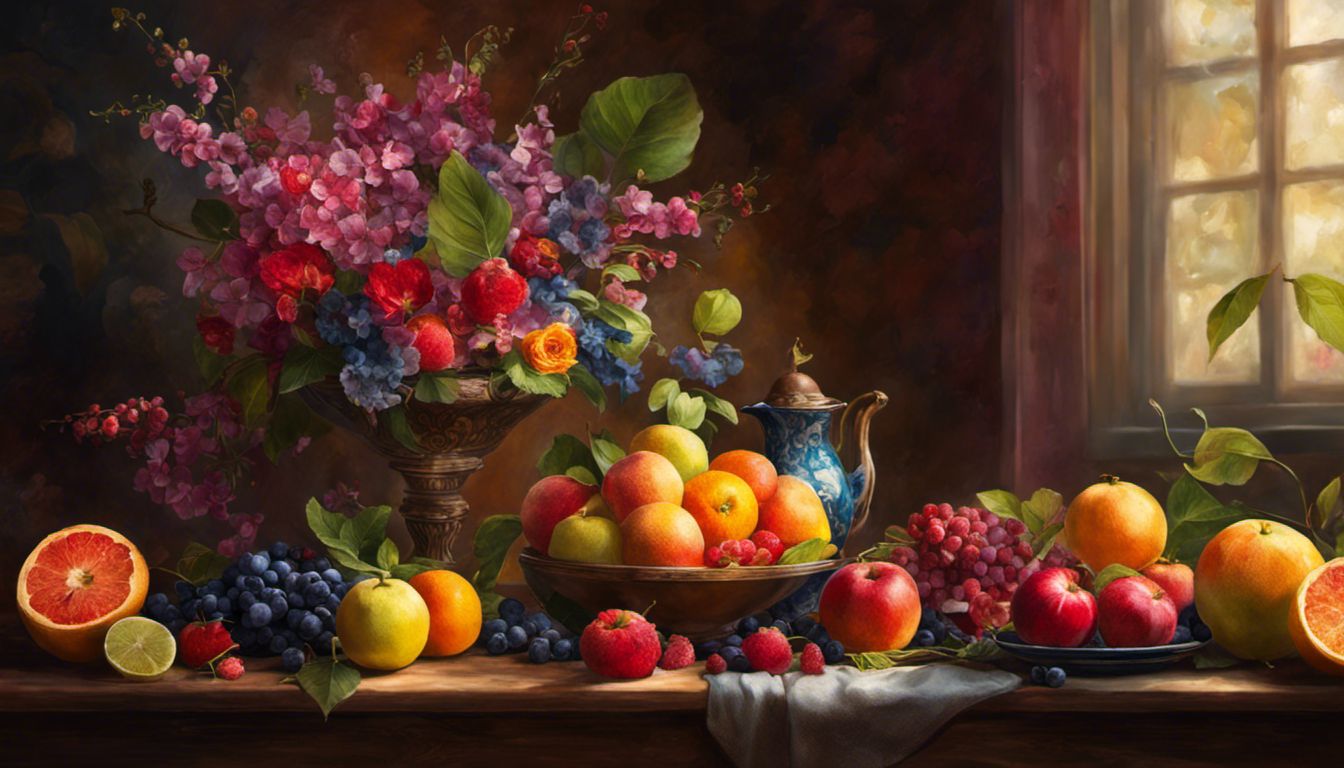Are your paintings lacking that wow factor? Good composition is the key to creating powerful, engaging artwork. This blog will guide you through mastering composition techniques with principles and demonstrations, making your art more effective.
Get ready to take your painting skills to the next level!
Key Takeaways
- Mastering composition techniques can improve the impact and effectiveness of your paintings.
- Composition is about arranging visual elements to create balance, contrast, and unity in your artwork.
- Visual instruction and step-by-step demonstrations are powerful tools for learning composition techniques.
- Color, light, perspective, and anatomy play crucial roles in creating strong compositions.
- Planning a strong composition involves considering visual balance, focal points, depth and perspective, negative space, and more.
- Regular practice of composition exercises can significantly enhance your painting skills.
- Watching experienced artists demonstrate composition techniques helps you learn practical examples and apply them to your own work.
The Importance of Composition in Painting

Understanding the basics of composition and how it can make or break a painting is crucial for artists.
Understanding the basics of composition
Composition is the arrangement of visual elements within a work of art. It provides structure to your painting and captivates the viewer’s interest by drawing their eyes towards specific areas in the artwork.
At its heart, composition is about balance and contrast – balancing colors, shapes, textures against each other for a visually pleasing result. Artistic devices such as visual balance, harmony and unity also play significant roles in creating compelling compositions.
Therefore, understanding these elemental principles lays a solid foundation for any artist aspiring to create engaging artworks.
How composition can make or break a painting
Composition plays an integral role in defining the success of a painting. A well-composed painting guides viewers’ eyes, highlighting important elements and creating a visual balance.
It uses techniques like the rule of thirds, contrast and emphasis, harmony and unity to shape its narrative. On the flip side, poor composition can lead to a cluttered canvas where key details get lost in confusion.
Even stunning color blends and intricate detailing cannot salvage a painting with flawed composition. Therefore, artists must prioritize mastering composition techniques to dramatically improve paintings.
Mastering Composition Techniques

Learn how to create visually compelling paintings through visual instruction and step-by-step demonstrations, exploring the role of color, light, perspective, and anatomy in composition.
Visual instruction and step-by-step demonstrations
Visual instruction and step-by-step demonstrations play a key role in mastering painting composition techniques.
- Visual instructions provide a clear guide on how to implement composition techniques in paintings.
- They offer an opportunity to see how the principles of design, such as visual balance and contrast, come into play.
- Step-by-step demonstrations break down complex composition concepts into digestible parts.
- These demonstrations allow artists to follow along and apply what they learn in real – time.
- Video courses often incorporate both visual instruction and step-by-step demonstrations for a comprehensive learning experience.
- Visual instructions paired with demonstrations can dramatically improve an artist’s ability to build strong compositions.
- This instruction method helps artists understand intricacies like the golden ratio, depth and perspective, and effective use of negative space.
- With regular practice of these methods, artists can enhance their overall painting skills significantly.
The role of color, light, perspective, and anatomy in composition
Color, light, perspective, and anatomy play crucial roles in composition. By understanding how these elements interact and influence each other, you can create more dynamic and visually appealing paintings.
Colors can evoke different emotions and set the mood of your artwork. Light and shadow help to create depth and emphasize certain areas of interest. Perspective adds dimension and realism to your composition, making it feel more three-dimensional.
And by studying anatomy, you can accurately depict the human form and ensure proportions are correct. Incorporating these elements effectively will enhance the overall impact of your compositions and captivate viewers.
Applying Composition Principles in Your Paintings
Plan and execute a strong composition by utilizing the principles of design such as visual balance, the rule of thirds, contrast and emphasis, harmony and unity, focal points, depth and perspective, the golden ratio, and negative space.
Planning and executing a strong composition
Planning and executing a strong composition is crucial for creating visually appealing paintings. To achieve this, consider the following elements:
- Visual balance: Ensure that the elements in your painting are arranged harmoniously to create balance and avoid any heaviness or imbalance.
- Rule of thirds: Divide your canvas into nine equal parts using two horizontal and two vertical lines. Place important focal points along these lines or at their intersections to create more dynamic compositions.
- Contrast and emphasis: Use contrasting values, colors, or textures to bring attention to specific areas of your painting and create a sense of depth and interest.
- Harmony and unity: Create a sense of cohesion by repeating certain shapes, colors, or patterns throughout your painting. This will help tie all the elements together and create a unified composition.
- Focal point: Identify the main subject or focal point of your painting and ensure that it is positioned strategically within the composition to draw viewers’ attention.
- Depth and perspective: Use techniques like overlapping objects, diminishing sizes, or atmospheric perspective to create a sense of depth in your paintings.
- Golden ratio: Apply the golden ratio (approximately 1:1.618) to determine pleasing proportions within your composition.
- Negative space: Pay attention to the empty spaces or negative space around your subjects as they play an equally important role in creating balance and visual interest.
Practice exercises and tips for improving composition skills
Improve your composition skills with these practice exercises and tips:
- Experiment with different compositions: Try out various arrangements of elements in your painting to find the most visually appealing composition.
- Use thumbnails: Before starting a painting, create small thumbnail sketches to explore different composition ideas. This will help you plan and visualize the final piece.
- Study the masters: Analyze paintings by renowned artists to understand how they effectively composed their works. Take note of their use of balance, color, and focal points.
- Focus on focal points: Identify the main subject or point of interest in your painting and ensure it is placed strategically to draw the viewer’s eye.
- Create visual balance: Consider the placement and distribution of elements within your composition to achieve a sense of visual harmony and balance.
- Play with contrast and emphasis: Utilize contrasting values, colors, or textures to create visual interest and guide the viewer’s attention.
- Pay attention to negative space: The empty areas in your composition are just as important as the filled ones. Use negative space effectively to enhance your painting’s overall composition.
- Explore depth and perspective: Incorporate techniques like overlapping objects, diminishing size, atmospheric perspective, or linear perspective to add depth and dimension to your artwork.
- Follow the rule of thirds: Divide your canvas into thirds both vertically and horizontally, then place key elements along these lines or at their intersections for more pleasing compositions.
- Seek feedback: Share your work with fellow artists or instructors who can provide constructive criticism and suggestions for improving your composition skills.
The Power of Demonstrations
Learn and apply composition techniques and principles by watching experienced artists in action through step-by-step demonstrations, enhancing your painting skills and allowing for continuous improvement.
Learning by watching experienced artists in action
Experiencing the artistic process firsthand can be an invaluable learning opportunity. By watching experienced artists in action, you have a front-row seat to their techniques, methods, and creative decision-making.
Whether it’s through video courses or live demonstrations, observing these experts allows you to witness their mastery of composition firsthand. This visual instruction provides you with practical examples and step-by-step guidance on how to apply different composition principles in your own paintings.
It’s like having a personal mentor guiding you through the process, helping you develop your skills and create more impactful artwork. So make sure to take advantage of this powerful learning tool and let the expertise of others inspire and guide your artistic journey.
Watching experienced artists in action offers a unique way to absorb new knowledge and grow as an artist. As they demonstrate various techniques and principles of composition, you can see how they build strong compositions from scratch – masterpieces that engage viewers’ senses and emotions.
These demonstrations provide valuable insights into creating effective paths for the viewer’s eye through elements such as visual balance, contrast, harmony, focal points, depth perspective, golden ratio, negative space etc., These visual lessons not only improve your understanding of artistic composition but also enable you to dramatically enhance your own paintings by incorporating these learned techniques into your work.
Applying techniques and principles demonstrated in the videos
You can take your painting skills to the next level by applying techniques and principles that are demonstrated in the videos. These visual instructions and step-by-step demonstrations provide a hands-on approach to learning composition.
By watching experienced artists in action, you can learn how to build strong compositions using techniques such as the rule of thirds, contrast and emphasis, harmony and unity, focal point, depth and perspective, golden ratio, and negative space.
Applying these composition principles in your own paintings can dramatically improve their overall impact and effectiveness. So don’t just watch passively – take what you’ve learned from the videos and put it into practice in your own artwork.
Taking Your Painting to the Next Level
Improve your overall painting skills by mastering composition techniques and continuously challenging yourself as an artist.
Improving your overall painting skills through mastering composition
Mastering composition in painting is key to improving your overall skills as an artist. By understanding and applying composition techniques, you can elevate the impact and effectiveness of your paintings.
Through visual instruction and step-by-step demonstrations, you will learn how color, light, perspective, and anatomy play crucial roles in creating strong compositions. With practice exercises and expert tips, you can continuously challenge yourself to build great compositions that dramatically improve the quality of your artwork.
How to continuously improve and challenge yourself as an artist
To continuously improve and challenge yourself as an artist, it’s important to never stop learning. Seek out new techniques, experiment with different styles, and explore various mediums.
Push yourself outside of your comfort zone and take on projects that may be difficult or unfamiliar. Surround yourself with other artists and join art communities where you can receive feedback and support.
Set goals for yourself and strive to surpass them. Embrace constructive criticism as a way to grow and improve your skills. Remember that improvement is a journey, not a destination, so keep pushing forward and never stop seeking ways to elevate your artistry.
In addition to expanding your technical skills, it’s also crucial to nurture your creativity by exploring new inspirations. Attend art exhibitions, visit galleries or museums, travel to different places – all these experiences can stimulate creativity and provide fresh perspectives.
Take time for self-reflection regularly; examine what drives you as an artist and what themes or subject matters resonate with you the most. Allow yourself room for experimentation and playfulness in your artistic process – sometimes the best breakthroughs happen when we let go of expectations.
Conclusion
Improve your paintings by mastering composition techniques through visual instruction and step-by-step demonstrations. Learn the role of color, light, perspective, and anatomy in creating effective compositions.
Apply composition principles to plan and execute strong compositions in your own artwork. Take advantage of the power of demonstrations by watching experienced artists in action and applying their techniques and principles to enhance your painting skills.
Continuously challenge yourself as an artist to improve and grow with each new project.
How Can Composition Techniques Improve Videography Skills for Beginners?
Mastering videography fundamentals for beginners is crucial to improving videography skills. Learning techniques such as rule of thirds, leading lines, and framing can significantly enhance the visual appeal of your videos. By implementing these composition techniques, beginners can create more visually captivating and professional-looking videos. Practice and experimentation are key to mastering these fundamentals and taking your videography skills to the next level.
How Can I Improve My Paintings Through Composition Techniques?
With composition techniques, you can elevate your paintings to new heights. Experiment with balance, where visual elements are evenly distributed. Consider framing elements within your composition to create a sense of depth and focus. Play with the rule of thirds, placing focal points off-center for a captivating effect. By incorporating composition techniques, your paintings will gain a strong visual appeal and convey your artistic message more effectively.
FAQs
1. What is composition in painting?
Composition refers to the arrangement and placement of elements within a painting, such as lines, shapes, colors, and textures, to create a visually pleasing and balanced artwork.
2. How can I improve the composition of my paintings?
You can improve the composition of your paintings by considering principles such as balance, focal point, rule of thirds, leading lines, and color harmony. Experimenting with different arrangements and studying master artists’ works can also help enhance your composition skills.
3. What are some common composition mistakes to avoid in painting?
Common composition mistakes to avoid in painting include placing elements too close to the edges or center of the canvas, lack of variety in size or value contrast, unintentional repetition patterns, and neglecting negative space.
4. Can I apply composition techniques across different styles of painting?
Yes! Composition techniques can be applied across various styles of painting such as realism, abstracts or impressionism. The principles for creating strong compositions remain relevant regardless of style.
5. Are there any resources available for learning more about mastering composition techniques in painting?
Yes! There are many books, online tutorials and courses available that teach specific compositional techniques along with demonstrations from experienced artists which you can find helpful on your artistic journey.






